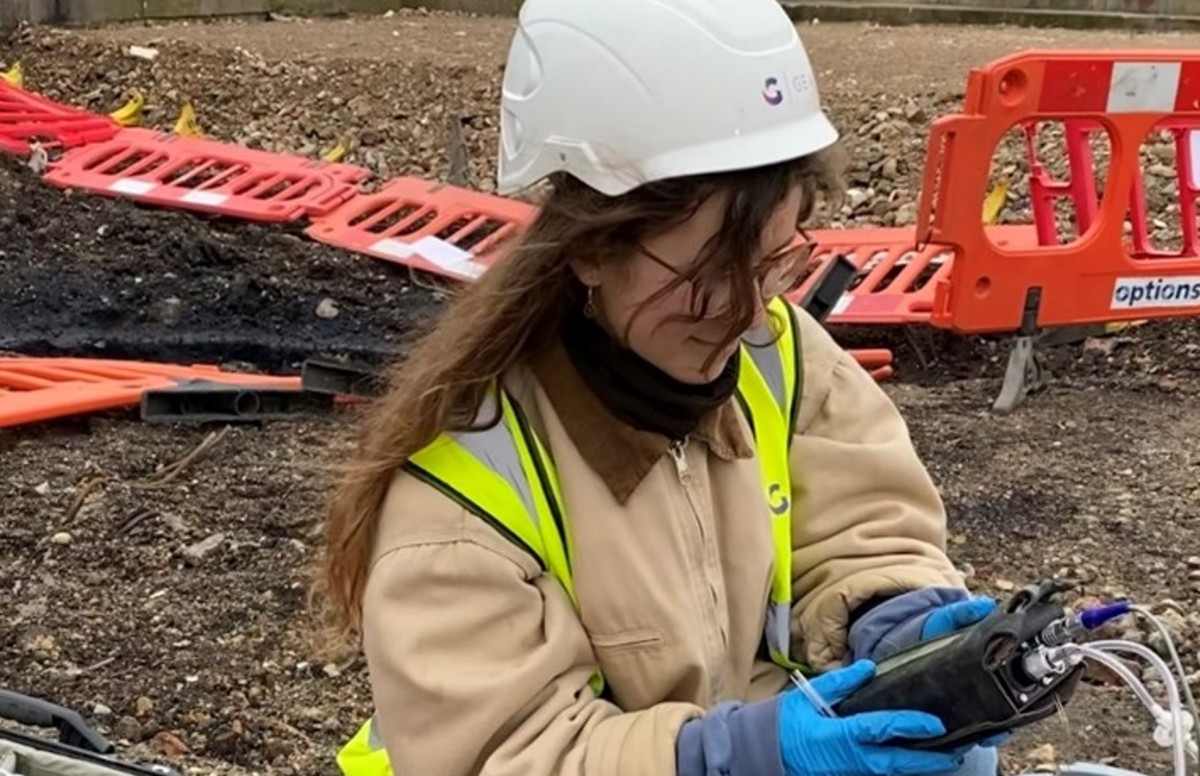Geotheta Can Be Fun For Everyone
Geotheta Can Be Fun For Everyone
Blog Article
The 9-Second Trick For Geotheta
Table of Contents8 Simple Techniques For GeothetaLittle Known Facts About Geotheta.The smart Trick of Geotheta That Nobody is Talking AboutIndicators on Geotheta You Should KnowGeotheta - Truths

They conduct website investigations, accumulate samples, carry out laboratory examinations, and evaluate data to review the suitability of the ground for building and construction tasks - Consulting Engineer. Based upon their findings, geotechnical designers offer suggestions for structure design, incline security, keeping structures, and mitigation of geotechnical hazards. They work together with various other specialists, such as architects, structural engineers, and building groups, to make sure that geotechnical factors to consider are integrated into the overall project design and implementation
By analyzing the behavior and buildings of soil and rock, they can recognize potential geotechnical risks such as landslides, soil settlement, or incline instability. Their competence assists avoid failures or accidents that could endanger lives and building. Right here are some thorough obligations and responsibilities of a geotechnical engineer: Site Examination: Geotechnical designers conduct site examinations to collect information on subsurface problems.
They analyze the information to recognize the buildings and habits of the dirt and rock, including their strength, permeability, compaction features, and groundwater problems. Geotechnical Analysis and Style: Geotechnical engineers evaluate the data gathered during website examinations to evaluate the security and suitability of the site for construction tasks. They perform geotechnical estimations and modeling to examine elements such as bearing ability, negotiation, slope security, lateral earth pressures, and groundwater circulation.
Little Known Facts About Geotheta.
Structure Design: Geotechnical engineers play an important function in designing foundations that can safely sustain the designated framework. They assess the soil conditions and load needs to figure out the appropriate structure type, such as superficial foundations (e.g., grounds), deep structures (e.g (https://forums.hostsearch.com/member.php?265240-geotheta)., stacks), or specialized strategies like dirt enhancement. They consider aspects such as settlement limitations, birthing ability, and soil-structure interaction to create optimal foundation styles
They examine building plans, screen site activities, and perform area evaluations to confirm that the style recommendations are adhered to. If unforeseen geotechnical concerns emerge, they examine the situation and provide recommendations for remediation or adjustments to the style. Threat Evaluation and Mitigation: Geotechnical engineers evaluate geotechnical risks and risks related to the task website, such as landslides, liquefaction, or dirt erosion.

Cooperation and Interaction: Geotechnical engineers function very closely with various other specialists associated with a task, such as designers, architectural designers, and building and construction teams. Efficient interaction and partnership are important to integrate geotechnical considerations right into the overall job design and building and construction procedure. Geotechnical designers supply technological competence, response inquiries, and make certain that geotechnical demands are fulfilled.
Top Guidelines Of Geotheta
Below are some sorts of geotechnical engineers: Foundation Engineer: Foundation engineers specialize in creating and analyzing structures for frameworks. They assess the dirt conditions, lots needs, and website attributes to establish the most suitable structure type and style, such as superficial structures, deep foundations, or specialized techniques like heap foundations.
They evaluate the variables influencing incline security, such as soil residential or commercial properties, groundwater problems, and slope geometry, and establish strategies to protect against slope failings and reduce risks. Earthquake Designer: Earthquake engineers focus on analyzing and creating frameworks to stand up to seismic forces. They analyze the seismic risk of a website, assess dirt liquefaction possibility, and establish seismic style requirements to guarantee the security and resilience of frameworks during quakes.
They perform field testing, gather examples, and evaluate the gathered data to characterize the dirt residential or commercial properties, geologic developments, and groundwater conditions at a website. Geotechnical Instrumentation Designer: Geotechnical instrumentation engineers concentrate on tracking and measuring the behavior of dirt, rock, and structures. They set up and maintain instrumentation you can try these out systems that keep an eye on elements such as soil negotiation, groundwater degrees, incline movements, and structural displacements to evaluate performance and give very early cautions of prospective concerns.
Top Guidelines Of Geotheta
They perform tests such as triaxial examinations, combination examinations, straight shear tests, and permeability tests to collect data for geotechnical analysis and design. Geosynthetics Engineer: Geosynthetics designers concentrate on the layout and application of geosynthetic products, such as geotextiles, geogrids, and geomembranes. They use these materials to boost soil stability, enhance inclines, offer water drainage services, and control disintegration.
They have a tendency to be investigatory people, which means they're intellectual, introspective, and investigative. They wonder, methodical, reasonable, analytical, and rational. Some of them are additionally social, suggesting they're kind, charitable, participating, person, caring, handy, compassionate, tactful, and friendly. Does this seem like you? Take our totally free career examination to find out if geotechnical engineer is one of your leading job matches.
In the workplace setting, geotechnical designers make use of specialized software program tools to do estimations, develop layouts, and analyze information. They prepare records, testimonial task specs, communicate with customers and group members, and coordinate task tasks. The workplace setting gives a conducive environment for research, evaluation, and partnership with various other professionals associated with the task.
Geotheta Can Be Fun For Anyone
They frequently go to project websites to conduct site examinations, examine geotechnical conditions, and gather data for analysis. These check outs entail traveling to different places, sometimes in remote or tough terrains. Geotechnical designers might perform dirt tasting, conduct examinations, and display building and construction activities to guarantee that the geotechnical elements of the job are being applied properly.
Geotechnical engineers also function in specialized geotechnical laboratories. Geotechnical research laboratory designers function extensively in these settings, dealing with screening devices, operating tools, and taping information.
Report this page